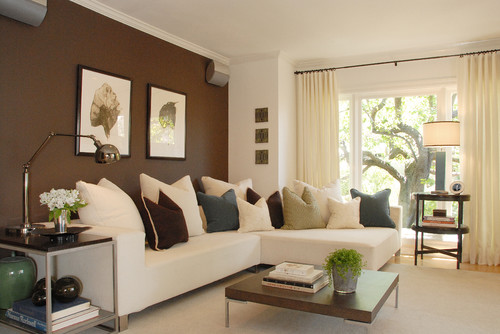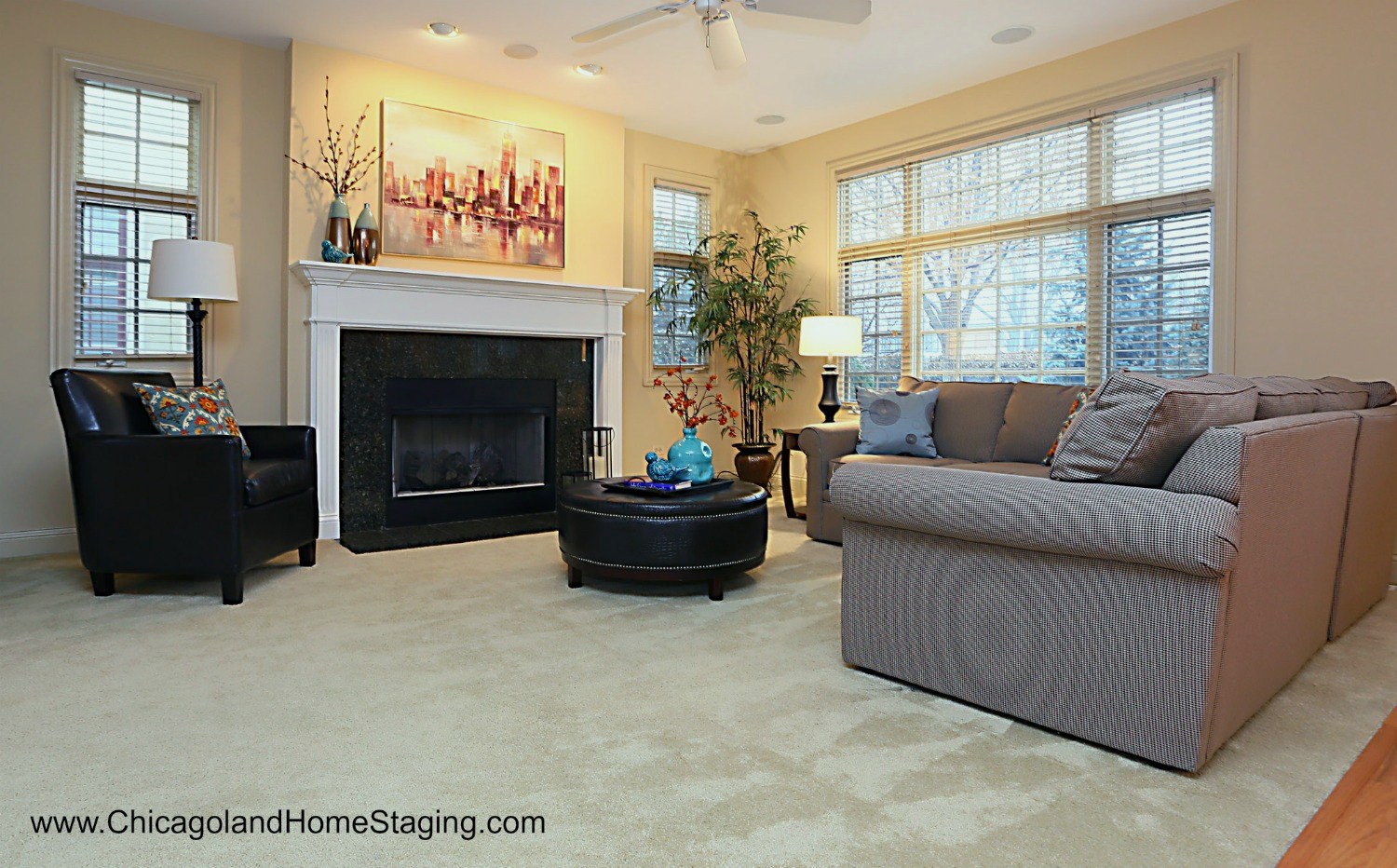Accent Walls – Caution Ahead!
These are all great reasons to put in an accent wall. However, it’s easy to make a mistake – and given that it’s an entire wall… Here then are my top tips for how we handle accent colors in our home staging in Chicagoland, Naperville, Glen Ellyn and surrounding area.

Notice the color of the walls carried down onto the island. This defines the kitchen space and ties it all together.
Top Tips To Get Accent Walls Right
1. Keep in mind the shape of the room.
Psychologically, a dark accent wall makes the wall closer and could make the room smaller – think light at the end of the tunnel — a reverse accent wall can make a room bigger. Equally, if you have a very square room and your furniture doesn’t work that way, you can create parallel walls of darker color to even out the space.
2. Sky vs. Sun
A blue ceiling does two things – reminds of the sky, yes, but it also casts blue all over everything. This can be good, but risky when staging a home for sale. Why, then, don’t we make all ceilings yellow, then it will always feel like the sun is shining. It doesn’t. Paint oxidizes and before long that yellow, no matter how cheerful it was originally, turns to french vanilla yellow, then egg yolk vanilla and eventually moldy yellow, or “mustard”, if one’s being charitable. i.e. proceed with caution.
15 Kids’ Room Accent Wall Ideas That You’ll Admire
3. Accentuate The Positive
When you have thick, chunky molding or a set of built-in book shelves, an accent color can set off the features with great impact. Especially with book shelves, you can pick a darker, bolder color than you might normally feel comfortable will. This can make one feel quite the designer!
4. In Lieu Of A Headboard
We see accents most often used, today, in bedrooms. They anchor the bed on the primary wall, not only cementing its position as the most important item in the room, but also making a stronger statement. Check out these fabulous Master Bedrooms with Accent Walls on Houzz
5. When you’re afraid of Art, or Can’t Afford What You Love
Some folks just starting out, or starting with a second or third home don’t have enough art. An accent wall, especially one with a pattern, is a good substitute. Consider a bold stripe, or a gentle floral wall paper and you have decor without a giant commitment.
Most Often Mistakes
1. Colors aren’t complementary
You need the color wheel with you when picking colors. It’s not that non-complementary colors are BAD, it’s just that it’s disturbing to the eye and not restful. If you need to be reminded to get out of the house and exercise all the time, then this might be an effective strategy. If not, stay with the wheel.
2. Too dark or Too Light
Too dark and the whole effect is smudgy or just dull; too light and what is the point? Test samples on the wall are the answer here.
3. Matching color to a favorite object, a painting or pillow.
Always go one shade lighter so that the favorite thing will pop, in contrast.
Where would you fall on this space –>








